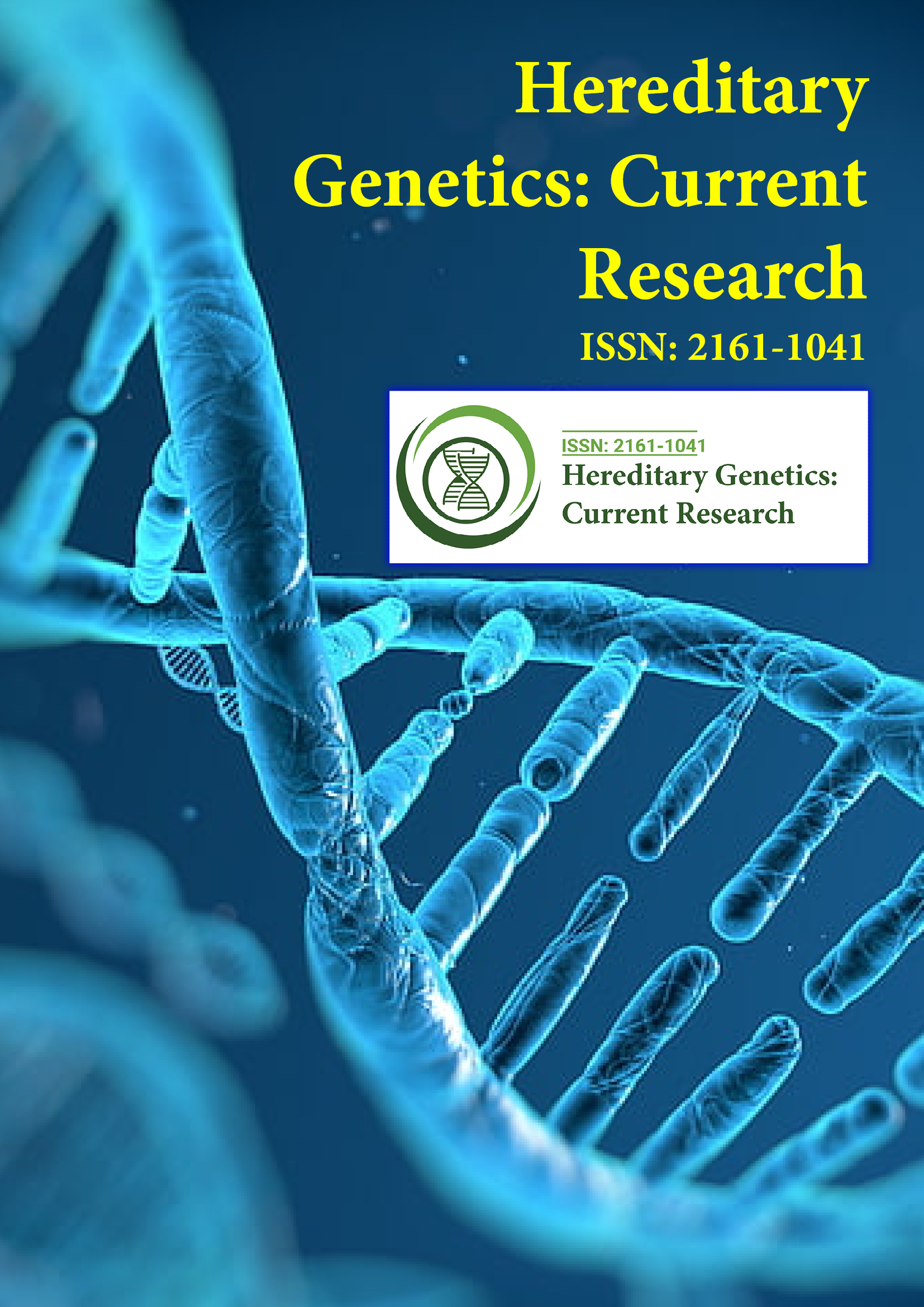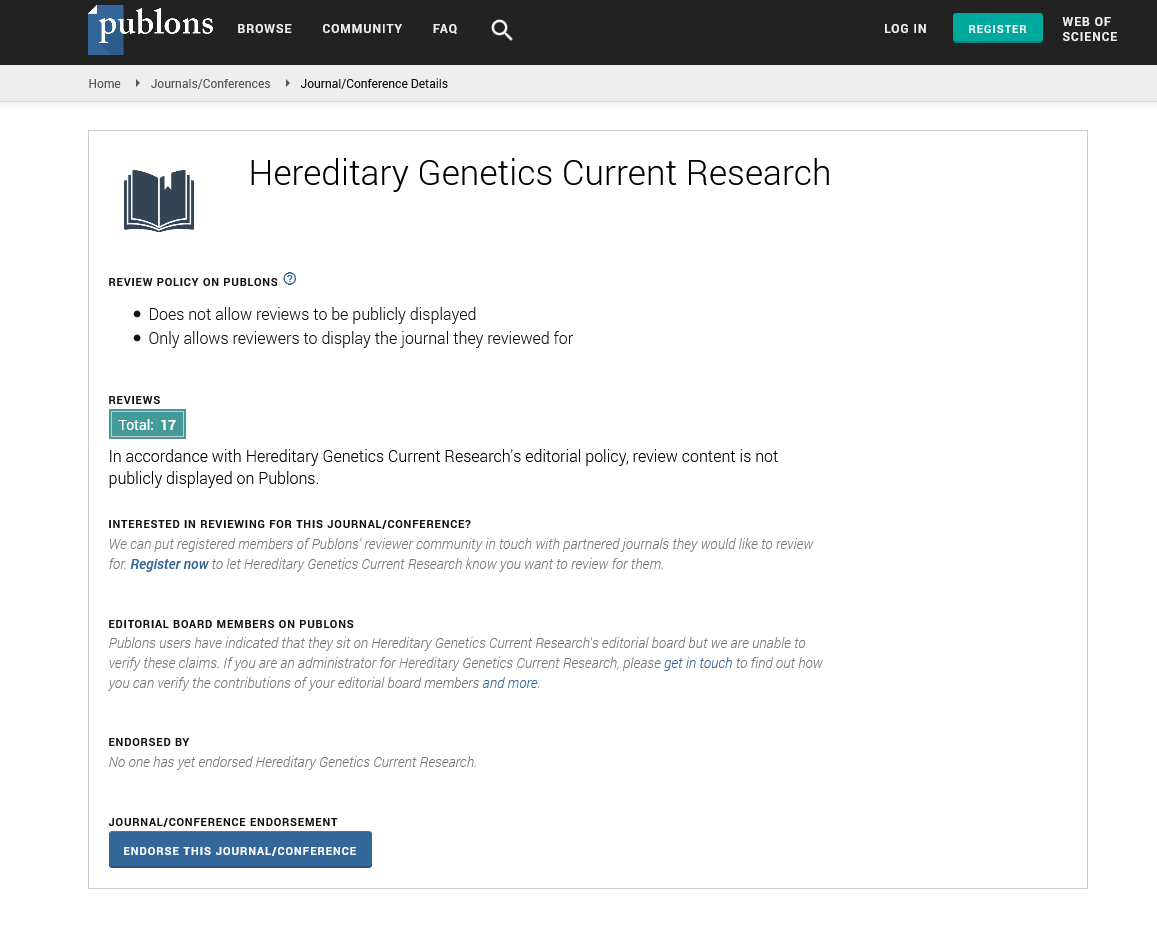Indexed In
- Open J Gate
- Genamics JournalSeek
- CiteFactor
- RefSeek
- Hamdard University
- EBSCO A-Z
- NSD - Norwegian Centre for Research Data
- OCLC- WorldCat
- Publons
- Geneva Foundation for Medical Education and Research
- Euro Pub
- Google Scholar
Useful Links
Share This Page
Journal Flyer

Open Access Journals
- Agri and Aquaculture
- Biochemistry
- Bioinformatics & Systems Biology
- Business & Management
- Chemistry
- Clinical Sciences
- Engineering
- Food & Nutrition
- General Science
- Genetics & Molecular Biology
- Immunology & Microbiology
- Medical Sciences
- Neuroscience & Psychology
- Nursing & Health Care
- Pharmaceutical Sciences
Commentary Article - (2024) Volume 13, Issue 2
The Evolution of the Genetic Code Based on Conservative Changes of Codons
David Sosnovik*Received: 28-May-2024, Manuscript No. HGCR-24-28365; Editor assigned: 31-May-2024, Pre QC No. HGCR-24-28365 (PQ); Reviewed: 14-Jun-2024, QC No. QC HGCR-24-28365; Revised: 21-Jun-2024, Manuscript No. HGCR-24-28365 (R); Published: 28-Jun-2024, DOI: 10.35248/2161-1041.24.13.283
Description
The genetic code, a foundation of molecular biology, has fascinated scientists for decades. It serves as the universal language that translates the sequence of nucleotides in DNA into the amino acids that form proteins. However, despite its essential role in biology, the genetic code has not been static. It has evolved over time, adapting to environmental pressures and biological needs. One of the key factors driving the evolution of the genetic code is the concept of conservative changes in codons. These changes, which involve the modification of codon sequences without altering the resulting protein, highlight the flexibility and adaptability of the genetic code. This article explains the genetic code has evolved through conservative changes of codons, the mechanisms behind this evolution and the implications for understanding life's complexity.
One key mechanism that can facilitate conservative codon changes is the phenomenon of codon usage bias. This refers to the preference for certain codons over others in the genomes of particular organisms. Codon usage bias can be influenced by factors such as the availability of tRNAs corresponding to specific codons, the metabolic cost of translation and environmental factors. Over time, organisms may evolve to favor certain codons, leading to subtle shifts in the genetic code without altering the encoded protein.
Another mechanism is the role of mutation hotspots, where certain regions of the genome are more prone to mutations than others. Mutations in these hotspots can lead to codon changes that might initially be neutral but later become advantageous through selection. For example, in response to changes in environmental stress, such as increased radiation or fluctuating temperatures, conservative mutations in codons might provide a more stable protein structure, improving survival rates.
Furthermore, Horizontal Gene Transfer (HGT) plays a critical role in the evolution of the genetic code. Through HGT, organisms can acquire new genes from different species, often introducing new codon sequences into their genomes. These transferred genes might undergo conservative changes to match the host’s existing codon usage preferences, facilitating the integration of new traits while maintaining protein function.
The study of codon evolution, especially the role of conservative changes, has significant implications for biotechnology and synthetic biology. Understanding how codons evolve and how they can be manipulated to optimize protein function opens up new avenues for genetic engineering. By altering codon sequences in ways that preserve protein function, scientists can create Genetically Modified Organisms (GMOs) that are better suited to specific industrial or medical applications.
For example, in the production of therapeutic proteins, such as insulin or antibodies, researchers can optimize the codon usage to enhance protein yield and stability. Additionally, understanding how conservative codon changes affect protein structure can inform the development of more efficient enzymes for biofuel production, waste degradation, or pharmaceutical synthesis.
The field of synthetic biology also stands to benefit from insights into codon evolution. Researchers are exploring ways to design novel genetic codes that expand beyond the 20 standard amino acids, creating synthetic proteins with new functions. This requires a deep understanding of how codon sequences can be modified without disrupting the overall protein architecture. By studying the natural evolution of codons, scientists can more effectively design synthetic pathways for producing entirely new classes of biomolecules.
Conclusion
The evolution of the genetic code, particularly through conservative changes in codons, highlights the inherent flexibility and robustness of biological systems. The ability of organisms to undergo genetic changes without altering protein function provides them with the means to adapt to a changing world. Through selective processes such as codon usage bias, mutation hotspots and horizontal gene transfer, the genetic code continues to evolve, ensuring the survival and diversification of life. Understanding these processes not only sheds light on the history of life on Earth but also holds promise for advancing biotechnology and synthetic biology. As research in this field progresses, we are likely to uncover even more ways in which the genetic code can be optimized for innovation and survival in an ever-changing world.
Citation: Sosnovik D (2024). The Evolution of the Genetic Code Based on Conservative Changes of Codons. Hereditary Genet. 13:283.
Copyright: © 2024 Sosnovik D. This is an open access article distributed under the terms of the Creative Commons Attribution License, which permits unrestricted use, distribution, and reproduction in any medium, provided the original author and source are credited.

